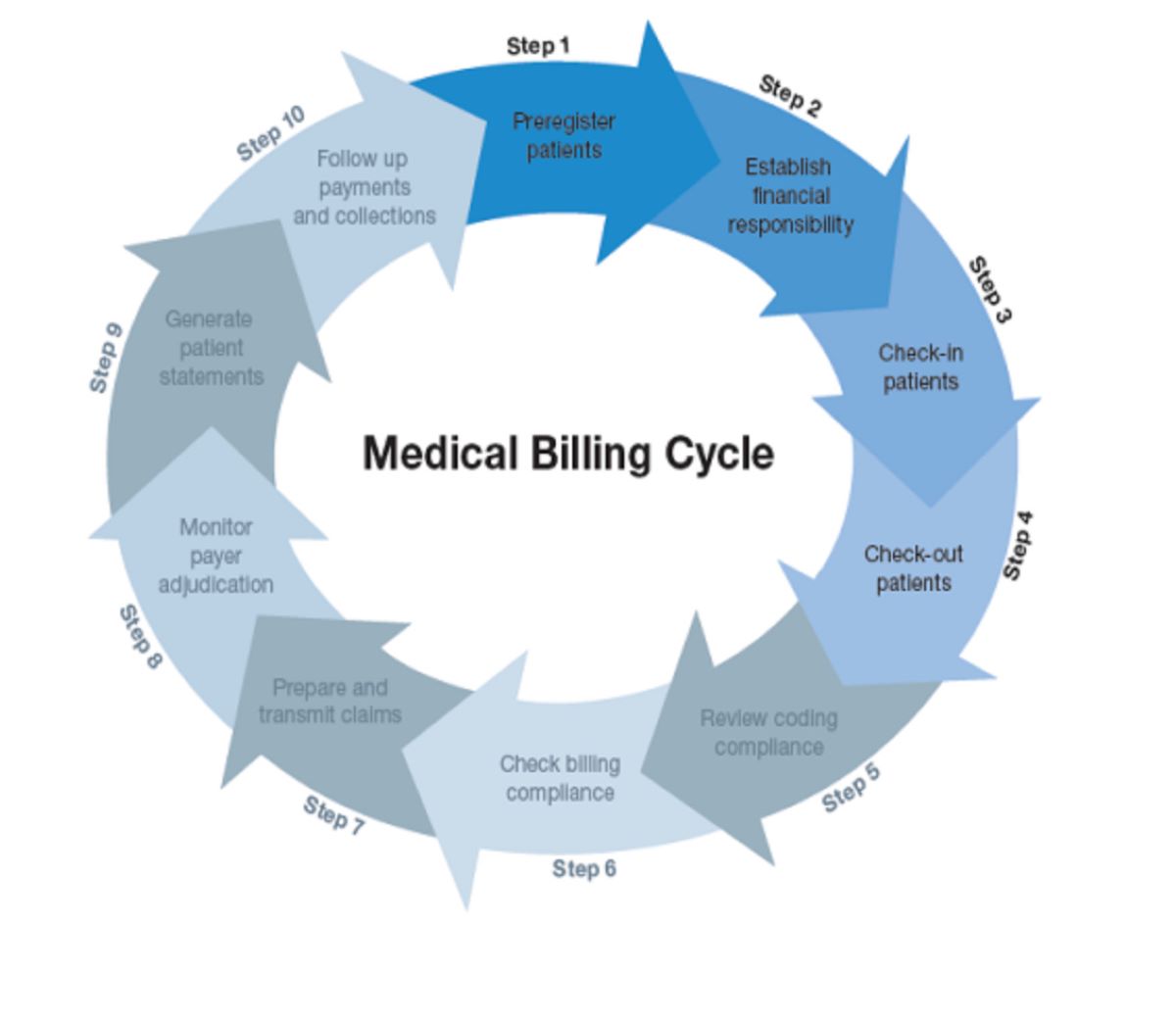

Finance
How Does Casualty Billing Cycle Work?
Published: March 7, 2024
Learn how the casualty billing cycle works and gain a better understanding of finance in the insurance industry. Discover the key components and processes involved.
(Many of the links in this article redirect to a specific reviewed product. Your purchase of these products through affiliate links helps to generate commission for LiveWell, at no extra cost. Learn more)
Table of Contents
Introduction
Understanding the Casualty Billing Cycle in Finance
In the realm of finance, the casualty billing cycle is a critical process that ensures timely and accurate reimbursement for healthcare services provided to patients who have been injured due to accidents or unforeseen events. This cycle involves a series of steps that are meticulously executed to facilitate the smooth flow of claims processing, from the initial submission to the ultimate settlement. Understanding the intricacies of the casualty billing cycle is essential for healthcare providers, insurance companies, and patients alike, as it directly impacts financial outcomes and the delivery of quality care.
The casualty billing cycle encompasses various elements, including claim submission, review, adjudication, and payment. It is a complex and dynamic system that demands precision, compliance with regulatory standards, and efficient communication among stakeholders. Moreover, the cycle is influenced by ever-evolving healthcare policies, technological advancements, and industry best practices, making it imperative for all involved parties to stay abreast of the latest developments and adapt their processes accordingly.
This article delves into the fundamental aspects of the casualty billing cycle, elucidating the steps involved, the intricacies of the billing process, and the significance of each stage in ensuring financial integrity and patient satisfaction. By shedding light on this essential component of the financial landscape, we aim to provide a comprehensive understanding of how the casualty billing cycle operates and its impact on the broader healthcare ecosystem. Let's embark on a journey through the intricacies of casualty billing, unraveling its nuances and uncovering the mechanisms that drive this pivotal financial process.
Understanding Casualty Billing
Casualty billing, within the context of finance, pertains to the invoicing and reimbursement procedures associated with healthcare services rendered to individuals who have sustained injuries due to accidents, disasters, or other unforeseen events. This specialized form of billing encompasses a wide spectrum of medical treatments, ranging from emergency care and surgical interventions to rehabilitative services, all of which are necessitated by the unforeseen nature of the injuries.
One of the key distinctions of casualty billing lies in its unique focus on injuries resulting from external forces, as opposed to illnesses or pre-existing conditions. As such, the billing and reimbursement processes are tailored to accommodate the specific circumstances and complexities associated with these injuries, requiring meticulous documentation and adherence to stringent regulatory guidelines.
Healthcare providers play a pivotal role in casualty billing, as they are responsible for accurately documenting the services rendered, as well as the associated costs, and submitting comprehensive claims to insurance carriers or other responsible parties. The intricacies of casualty billing demand a thorough understanding of medical coding, billing regulations, and the ability to effectively communicate with various stakeholders, including patients, insurers, and legal entities.
Furthermore, casualty billing necessitates a nuanced approach to claims processing, as it often involves coordination with legal proceedings, liability assessments, and negotiations with multiple parties to ensure fair and timely reimbursement. This multifaceted nature distinguishes casualty billing from standard medical billing practices and underscores the need for specialized expertise in navigating its complexities.
Understanding the nuances of casualty billing is essential for healthcare professionals, insurance personnel, and patients, as it directly impacts the financial aspects of injury-related healthcare services. By delving into the intricacies of casualty billing, stakeholders can gain a comprehensive understanding of the unique challenges and requirements associated with this specialized form of medical invoicing, thereby fostering greater efficiency, accuracy, and transparency in the billing and reimbursement processes.
Steps in the Casualty Billing Cycle
The casualty billing cycle comprises a series of essential steps that collectively facilitate the accurate and timely processing of claims related to injury-induced healthcare services. Each stage plays a crucial role in ensuring that healthcare providers receive rightful reimbursement for the care they deliver, while also upholding the integrity of the overall billing process. Understanding these steps is paramount for all stakeholders involved in casualty billing, as it enables them to navigate the complexities of the cycle with precision and efficacy.
1. Patient Registration and Documentation: The cycle commences with the comprehensive registration of patients who have sustained injuries, encompassing detailed demographic information, insurance details, and the circumstances surrounding the injury. Accurate documentation is imperative to establish a thorough record of the patient’s case, which forms the basis for subsequent billing activities.
2. Medical Coding and Documentation: Healthcare providers meticulously document the services rendered to the injured patient, assigning specific medical codes to procedures, diagnoses, and treatments. This coding is crucial for accurately conveying the nature of the services provided and is instrumental in the subsequent billing and claims processing.
3. Claim Submission: Once the medical coding and documentation are complete, the healthcare provider submits the claim to the relevant insurance carrier or responsible party. This step involves transmitting comprehensive details of the services rendered, along with associated costs and medical necessity documentation.
4. Claim Adjudication: The submitted claim undergoes a thorough review by the insurance carrier, during which the accuracy of the documentation, adherence to billing regulations, and the validity of the claim are assessed. This stage often involves communication between the healthcare provider and the insurer to address any discrepancies or requests for additional information.
5. Payment and Reimbursement: Upon successful adjudication, the insurance carrier processes the claim and disburses payment to the healthcare provider based on the agreed-upon reimbursement rates and coverage. This stage marks the culmination of the billing cycle, signifying the resolution of the claim and the receipt of rightful compensation for the services rendered.
These pivotal steps form the backbone of the casualty billing cycle, harmonizing the efforts of healthcare providers, insurers, and patients to ensure the seamless processing of claims and the equitable reimbursement for injury-related healthcare services. By comprehensively understanding and diligently executing each stage, stakeholders can navigate the complexities of casualty billing with precision and efficacy, fostering financial integrity and patient-centric care.
Billing Process for Casualty Claims
The billing process for casualty claims is a multifaceted endeavor that encompasses a range of intricate activities aimed at accurately invoicing and seeking reimbursement for healthcare services provided to individuals who have sustained injuries due to unforeseen events. This specialized form of billing demands meticulous attention to detail, adherence to regulatory standards, and effective communication among stakeholders to ensure the seamless processing of claims and the fair compensation for the care delivered.
Healthcare providers play a central role in the billing process for casualty claims, beginning with the comprehensive documentation of the services rendered to the injured individual. This documentation involves precise medical coding, which entails assigning specific alphanumeric codes to diagnoses, procedures, and treatments, enabling clear communication of the healthcare services provided.
Once the services are documented and coded, the healthcare provider proceeds to submit the claim to the relevant insurance carrier or responsible party. This submission involves the transmission of comprehensive details, including the patient’s information, the nature of the injury, the services rendered, associated costs, and any medical necessity documentation required to substantiate the claim.
Upon receipt of the claim, the insurance carrier initiates the adjudication process, wherein the submitted documentation is rigorously reviewed to assess its accuracy, compliance with billing regulations, and the validity of the claim. This stage often necessitates communication between the healthcare provider and the insurer to address any inquiries, discrepancies, or requests for additional information.
Following successful adjudication, the insurance carrier processes the claim and disburses payment to the healthcare provider based on the agreed-upon reimbursement rates and coverage. It is imperative for healthcare providers to diligently reconcile the payments received with the billed amounts, ensuring that they are fairly compensated for the services rendered while upholding financial integrity and transparency.
The billing process for casualty claims is further complicated by the potential involvement of legal proceedings, liability assessments, and negotiations with multiple parties, particularly in cases where third-party liability or legal settlements come into play. This underscores the intricate nature of casualty billing and the need for specialized expertise to navigate its complexities effectively.
By meticulously navigating each phase of the billing process for casualty claims, healthcare providers, insurance carriers, and patients can collectively uphold the financial integrity of injury-related healthcare services, fostering transparency, accuracy, and equitable reimbursement. This concerted effort ensures that the billing process aligns with regulatory standards, industry best practices, and the overarching goal of delivering patient-centric care amidst the complexities of casualty billing.
Conclusion
The casualty billing cycle stands as a critical component within the realm of finance, governing the invoicing and reimbursement processes for healthcare services delivered to individuals who have sustained injuries due to unforeseen events. This intricate cycle encompasses a series of essential steps, each playing a pivotal role in ensuring the accurate processing of claims and the equitable compensation for injury-induced healthcare services.
Understanding the nuances of casualty billing is paramount for healthcare providers, insurance carriers, and patients, as it empowers them to navigate the complexities of the cycle with precision and efficacy. From patient registration and documentation to claim adjudication and reimbursement, each stage demands meticulous attention to detail, compliance with regulatory standards, and effective communication among stakeholders to uphold the financial integrity of the billing process.
Healthcare providers shoulder the responsibility of meticulously documenting the services rendered and submitting comprehensive claims, while insurance carriers rigorously adjudicate these claims to ascertain their accuracy and validity. The culmination of this process entails the fair and timely reimbursement for the care delivered, marking the successful resolution of the claim and the financial closure of the billing cycle.
Moreover, the multifaceted nature of casualty billing necessitates a nuanced approach to claims processing, often involving coordination with legal proceedings, liability assessments, and negotiations with multiple parties. This complexity underscores the need for specialized expertise in navigating the intricacies of casualty billing, fostering greater efficiency, accuracy, and transparency in the billing and reimbursement processes.
By comprehensively understanding and diligently executing each stage of the casualty billing cycle, stakeholders can harmonize their efforts to ensure the seamless processing of claims and the equitable reimbursement for injury-related healthcare services. This concerted endeavor not only upholds the financial integrity of the billing process but also underscores the overarching commitment to delivering patient-centric care amidst the complexities of casualty billing.
As the landscape of healthcare continues to evolve, the casualty billing cycle remains a cornerstone of financial operations, demanding continuous adaptation to regulatory changes, technological advancements, and industry best practices. By embracing this evolution and fostering a deep understanding of casualty billing, stakeholders can navigate its complexities with agility and precision, ensuring the seamless flow of claims processing and the equitable compensation for injury-induced healthcare services.














